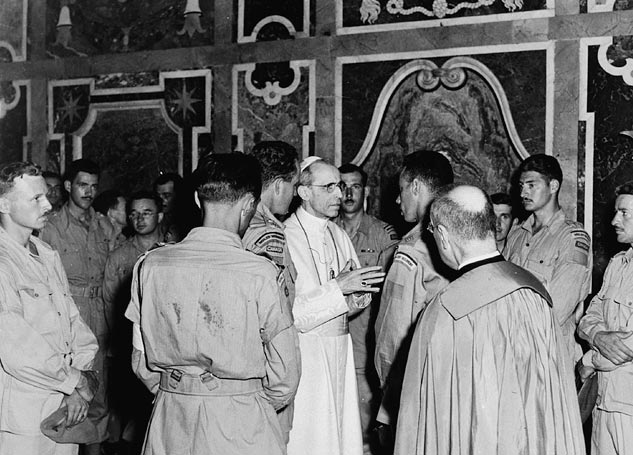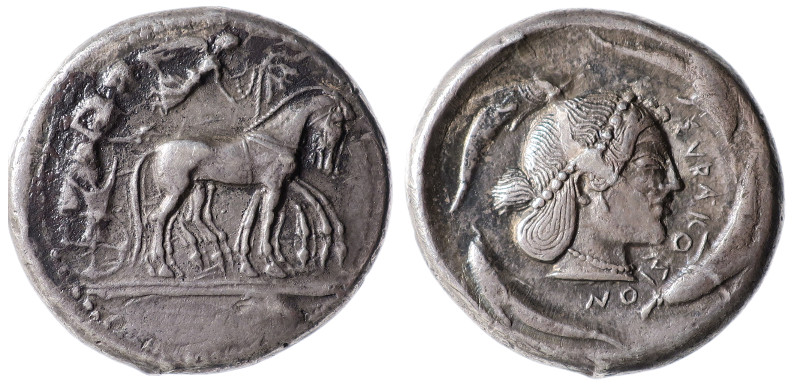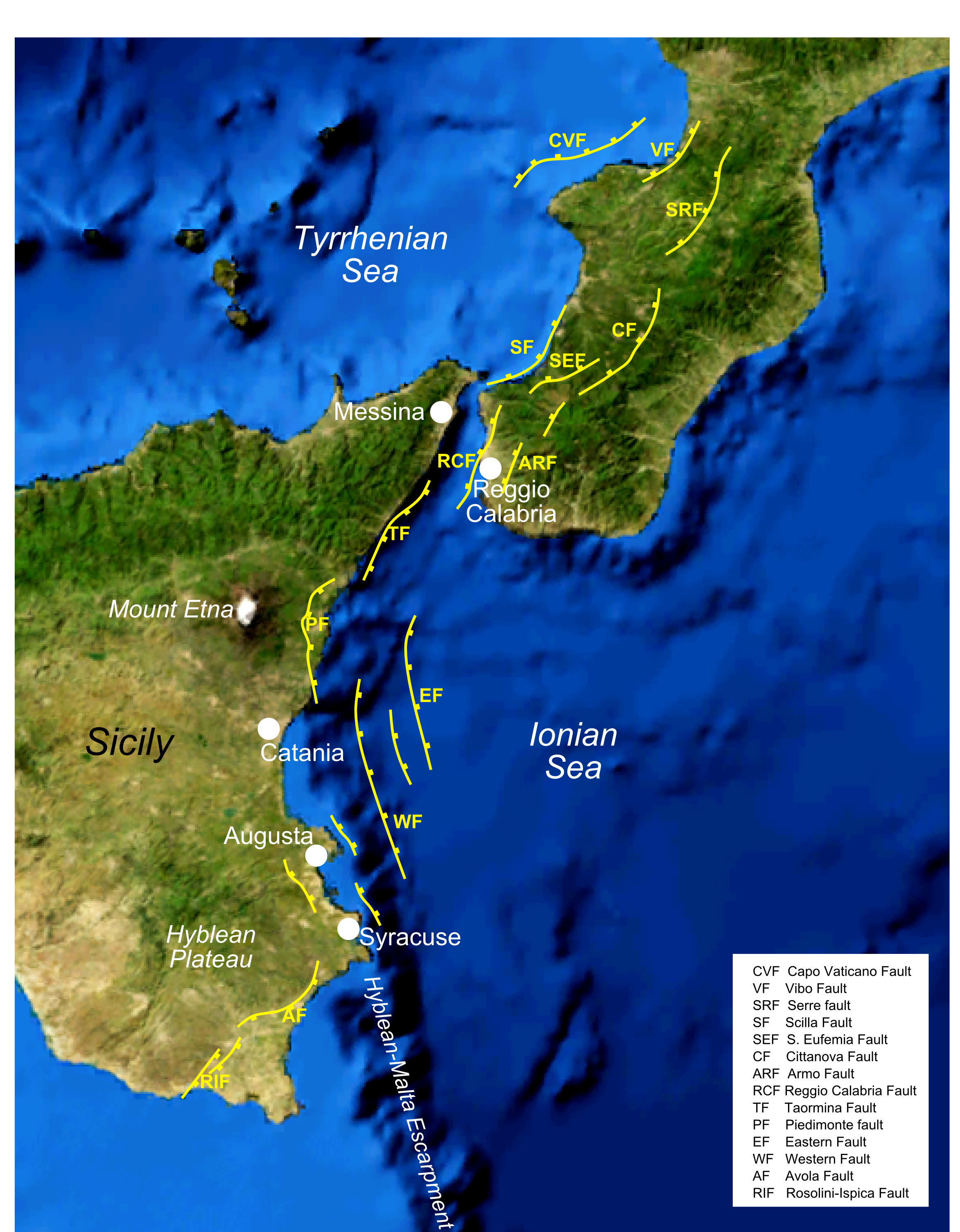|
Spirito Santo, Siracusa
Spirito Santo is a baroque-style, Roman Catholic church located on Lungomare Ortigia #4, facing towards the Ionian sea, on the island of Ortigia, in the historic city center of Siracusa in Sicily, Italy. Description A church at the site stood apparently since the 4th century, but had been damaged severely by earthquakes including one in 1542, culminating in its toppling during the 1693 Sicily earthquake. It was rebuilt during the rule of the Spanish in Sicily by the architect Pompeo Picherali in 1727. Since 1652, the church has been sponsored by the Confraternity of the Holy Spirit. Members of the lay confraternity, dressed in hooded robes, had privileges of carrying out processions with displays of "mysteries" related to the Passion during Holy Week. Just above the door is a shield with the double cross symbol of the Confraternity. Above this is a royal heraldic shield, likely a Spanish Bourbon symbol with a single headed eagle with a crown above. The interior of the church h ... [...More Info...] [...Related Items...] OR: [Wikipedia] [Google] [Baidu] |
Syracuse, Sicily
Syracuse ( ; ; ) is a historic city on the Italian island of Sicily, the capital of the Italian province of Syracuse. The city is notable for its rich Greek and Roman history, culture, amphitheatres, architecture, and as the birthplace and home of the pre-eminent mathematician and engineer Archimedes. This 2,700-year-old city played a key role in ancient times, when it was one of the major powers of the Mediterranean world. Syracuse is located in the southeast corner of the island of Sicily, next to the Gulf of Syracuse beside the Ionian Sea. It is situated in a drastic rise of land with depths being close to the city offshore although the city itself is generally not so hilly in comparison. The city was founded by Ancient Greek Corinthians and Teneans and became a very powerful city-state. Syracuse was allied with Sparta and Corinth and exerted influence over the entirety of Magna Graecia, of which it was the most important city. Described by Cicero as "the ... [...More Info...] [...Related Items...] OR: [Wikipedia] [Google] [Baidu] |
Catholic Church
The Catholic Church (), also known as the Roman Catholic Church, is the List of Christian denominations by number of members, largest Christian church, with 1.27 to 1.41 billion baptized Catholics Catholic Church by country, worldwide as of 2025. It is among the world's oldest and largest international institutions and has played a prominent role in the history and development of Western civilization.Gerald O'Collins, O'Collins, p. v (preface). The church consists of 24 Catholic particular churches and liturgical rites#Churches, ''sui iuris'' (autonomous) churches, including the Latin Church and 23 Eastern Catholic Churches, which comprise almost 3,500 dioceses and Eparchy, eparchies List of Catholic dioceses (structured view), around the world, each overseen by one or more Bishops in the Catholic Church, bishops. The pope, who is the bishop of Rome, is the Papal supremacy, chief pastor of the church. The core beliefs of Catholicism are found in the Nicene Creed. The ... [...More Info...] [...Related Items...] OR: [Wikipedia] [Google] [Baidu] |
Baroque
The Baroque ( , , ) is a Western Style (visual arts), style of Baroque architecture, architecture, Baroque music, music, Baroque dance, dance, Baroque painting, painting, Baroque sculpture, sculpture, poetry, and other arts that flourished from the early 17th century until the 1750s. It followed Renaissance art and Mannerism and preceded the Rococo (in the past often referred to as "late Baroque") and Neoclassicism, Neoclassical styles. It was encouraged by the Catholic Church as a means to counter the simplicity and austerity of Protestant architecture, art, and music, though Lutheran art#Baroque period, Lutheran Baroque art developed in parts of Europe as well. The Baroque style used contrast, movement, exuberant detail, deep color, grandeur, and surprise to achieve a sense of awe. The style began at the start of the 17th century in Rome, then spread rapidly to the rest of Italy, France, Spain, and Portugal, then to Austria, southern Germany, Poland and Russia. By the 1730s, i ... [...More Info...] [...Related Items...] OR: [Wikipedia] [Google] [Baidu] |
Baroque Architecture
Baroque architecture is a highly decorative and theatrical style which appeared in Italy in the late 16th century and gradually spread across Europe. It was originally introduced by the Catholic Church, particularly by the Jesuits, as a means to combat the Reformation and the Protestantism, Protestant church with a new architecture that inspired surprise and awe. It reached its peak in the High Baroque (1625–1675), when it was used in churches and palaces in Italy, Spain, Portugal, France, Bavaria and Austria. In the Late Baroque period (1675–1750), it reached as far as Russia, the Ottoman Baroque architecture, Ottoman Empire and the Spanish colonization of the Americas, Spanish and Portuguese colonization of the Americas, Portuguese colonies in Latin America. In about 1730, an even more elaborately decorative variant called Rococo appeared and flourished in Central Europe. Baroque architects took the basic elements of Renaissance architecture, including domes and colonnades, ... [...More Info...] [...Related Items...] OR: [Wikipedia] [Google] [Baidu] |
Roman Catholic
The Catholic Church (), also known as the Roman Catholic Church, is the largest Christian church, with 1.27 to 1.41 billion baptized Catholics worldwide as of 2025. It is among the world's oldest and largest international institutions and has played a prominent role in the history and development of Western civilization. O'Collins, p. v (preface). The church consists of 24 ''sui iuris'' (autonomous) churches, including the Latin Church and 23 Eastern Catholic Churches, which comprise almost 3,500 dioceses and eparchies around the world, each overseen by one or more bishops. The pope, who is the bishop of Rome, is the chief pastor of the church. The core beliefs of Catholicism are found in the Nicene Creed. The Catholic Church teaches that it is the one, holy, catholic and apostolic church founded by Jesus Christ in his Great Commission, that its bishops are the successors of Christ's apostles, and that the pope is the successor of Saint Peter, upo ... [...More Info...] [...Related Items...] OR: [Wikipedia] [Google] [Baidu] |
Ortigia
Ortygia ( ; ; ) is a small island which is the historical centre of the city of Syracuse, Sicily. The island, also known as the (Old City), contains many historical landmarks. The name originates from the Ancient Greek (), which means "quail". Overview Ortygia is a small island and the historical heart of the city of Syracuse, Sicily. The island contains many of the city's most ancient landmarks, including the Temple of Apollo, the Fountain of Arethusa, and the Cathedral of Syracuse, which was originally a Greek temple. In 2005, Ortygia was inscribed as part of the UNESCO World Heritage Site "Syracuse and the Rocky Necropolis of Pantalica". The island represents the core of ancient Syracuse and showcases a continuous layering of cultural influences from Greek, Roman, Byzantine, Arab, and Norman periods. Its urban fabric, religious structures, and public spaces reflect the political and religious evolution of the Mediterranean region over more than two millennia. As such, O ... [...More Info...] [...Related Items...] OR: [Wikipedia] [Google] [Baidu] |
Siracusa, Sicily
Syracuse ( ; ; ) is a historic city on the Italian island of Sicily, the capital of the Italian province of Syracuse. The city is notable for its rich Greek and Roman history, culture, amphitheatres, architecture, and as the birthplace and home of the pre-eminent mathematician and engineer Archimedes. This 2,700-year-old city played a key role in ancient times, when it was one of the major powers of the Mediterranean world. Syracuse is located in the southeast corner of the island of Sicily, next to the Gulf of Syracuse beside the Ionian Sea. It is situated in a drastic rise of land with depths being close to the city offshore although the city itself is generally not so hilly in comparison. The city was founded by Ancient Greek Corinthians and Teneans and became a very powerful city-state. Syracuse was allied with Sparta and Corinth and exerted influence over the entirety of Magna Graecia, of which it was the most important city. Described by Cicero as "the greatest ... [...More Info...] [...Related Items...] OR: [Wikipedia] [Google] [Baidu] |
1693 Sicily Earthquake
The 1693 Sicily earthquake was a natural disaster that struck parts of southern Italy near Sicily, then a territory part of the Crown of Aragon by the Kings of Spain Calabria and Malta, on 11 January at around 21:00 local time. This earthquake was preceded by a damaging foreshock on 9 January. The main quake had an estimated magnitude of 7.4 on the moment magnitude scale, the most powerful in recorded Italian history, and a maximum intensity of XI (''Extreme'') on the Mercalli intensity scale, destroying at least 70 towns and cities, seriously affecting an area of and causing the death of about 60,000 people. The earthquake was followed by a number of tsunamis that devastated the coastal villages on the Ionian Sea and in the Straits of Messina. Almost two-thirds of the entire population of Catania were killed. The Epicenter, epicentre of the disaster was probably close to the coast, possibly offshore, although the exact position remains unknown. The extent and level of destruction ... [...More Info...] [...Related Items...] OR: [Wikipedia] [Google] [Baidu] |
Pompeo Picherali
Pompeo is both a masculine Italian given name and a surname, derived from the Roman "Pompeius". Notable people with the name include: Name Given name: * Pompeo Aldrovandi (1668–1752), Italian Cardinal of the Roman Catholic Church * Pompeo Aldrovandini (1677–1735), Italian painter of the Baroque period * Pompeo Batoni (1708–1787), Italian painter * Pompeo Cannicciari (1670–1744), Italian composer * Pompeo Colonna (1479–1532), Italian Cardinal, politician and condottiero * Pompeo Coppini (1870–1957), Italian sculptor who emigrated to the United States * Pompeo D'Ambrosio (1917–1998), Italian who became a Venezuelan businessman * Pompeo Ghitti (1631–1703), Italian painter of the Baroque period * Pompeo Landulfo (1515–1590), Italian painter of the Renaissance period * Pompeo Marchesi (1783–1858), Lombard sculptor of the neoclassical school * Pompeo Posar (1921–2004), Playboy magazine staff photographer * Pompeo Targone, Italian military engineer in the ... [...More Info...] [...Related Items...] OR: [Wikipedia] [Google] [Baidu] |
Antonello Da Messina
Antonello da Messina (; 1425–1430February 1479), properly Antonello di Giovanni di Antonio, but also called Antonello degli Antoni and Anglicized as Anthony of Messina, was an Italian painter from Messina, active during the Italian Early Renaissance. His work shows strong influences from Early Netherlandish painting, although there is no documentary evidence that he ever travelled beyond Italy. Giorgio Vasari credited him with the introduction of oil painting into Italy, although this is now regarded as wrong. Unusually for a southern Italian artist of the Renaissance, his work proved influential on painters in northern Italy, especially in Venice. Biography Early life and training Antonello was born at Messina around 1429–1431, to Garita (Margherita) and Giovanni de Antonio Mazonus, a sculptor who trained him early on. He and his family resided in the Sicofanti district of the city. Antonello is thought to have apprenticed in Rome before going to Naples, where Netherla ... [...More Info...] [...Related Items...] OR: [Wikipedia] [Google] [Baidu] |
18th-century Roman Catholic Church Buildings In Italy
The 18th century lasted from 1 January 1701 (represented by the Roman numerals MDCCI) to 31 December 1800 (MDCCC). During the 18th century, elements of Enlightenment thinking culminated in the Atlantic Revolutions. Revolutions began to challenge the legitimacy of monarchical and aristocratic power structures. The Industrial Revolution began mid-century, leading to radical changes in human society and the environment. The European colonization of the Americas and other parts of the world intensified and associated mass migrations of people grew in size as part of the Age of Sail. During the century, slave trading expanded across the shores of the Atlantic Ocean, while declining in Russia and China. Western historians have occasionally defined the 18th century otherwise for the purposes of their work. For example, the "short" 18th century may be defined as 1715–1789, denoting the period of time between the death of Louis XIV of France and the start of the French ... [...More Info...] [...Related Items...] OR: [Wikipedia] [Google] [Baidu] |






